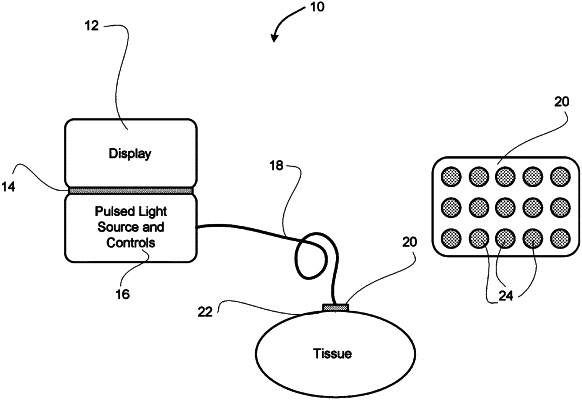| CPC A61N 7/00 (2013.01) [A61B 18/26 (2013.01); A61B 2018/266 (2013.01); A61N 2007/0026 (2013.01)] | 8 Claims |

|
1. A method for providing combined light and optoacoustic therapy to injured brain tissue, the method comprising:
applying a patient interface to a skin surface of a patient;
using the patient interface to deliver to the injured brain tissue therapeutic pulsed light having a pulse duration ranging from 1 femtosecond to 1 microsecond, a pulse energy of up to 15 mJ, a pulse repetition rate ranging from 0.1 Hz to 1 MHz, and a wavelength ranging from 680 to 950 nm; and
inducing therapeutic ultrasound waves within the injured brain tissue with the pulsed light, the ultrasound waves having a frequency of 0.01 to 100 MHz,
whereby the produced ultrasound waves and the pulsed light stimulate healing of the injured brain tissue,
wherein the injury of the injured brain tissue is selected from a traumatic brain injury, stroke, neurodegenerative disease, age-related (presenile) dementia, cognitive decline in the elderly as a consequence of atherosclerosis, and cognitive decline caused by normal pressure hydrocephalus.
|